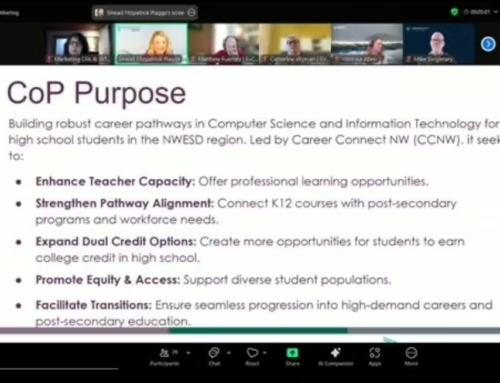 Last spring I shared what I learned at an equity workshop at the NWESD. I was challenged to develop my equity lens and better develop anti-racist behaviors. I have been reading books and articles, building relationships with people different than me, listening to learn, and observing people of color interact with a primarily white community. This has both enriched my life and prompted questions and a desire to continue my learning.
Last spring I shared what I learned at an equity workshop at the NWESD. I was challenged to develop my equity lens and better develop anti-racist behaviors. I have been reading books and articles, building relationships with people different than me, listening to learn, and observing people of color interact with a primarily white community. This has both enriched my life and prompted questions and a desire to continue my learning.
As I develop more relationships and observe our community one of the things I am learning to navigate is how to respond when something racist has been said or instigated. I realize as I speak to my neighbors, colleagues, friends, and classmates, that many of us are trying to answer the same question. Let me share what I learned and am practicing to develop my anti-racist stance.
There is not one right response
How to respond depends on a number of things – personal safety, safety from retribution (i.e. if comments made by superior), circumstances, who the comment came from and your role. It will also depend if you believe the comment is intentional or unintentional. One article I read said that in some circumstances it is mandatory to address racist comments and actions. For example; if you are a manager and a comment is made toward an employee or you are a teacher and a comment is made to a student.
Stay calm and respectful
It will very likely NOT help to respond in anger or in an attacking manner. You will understand more and have a greater impact if you are able to stay in the conversation and ensure the confrontation is calm and respectful. Challenge the words and behaviors, not the person.
It may also mean you need to say something direct like ” this language/conversation is uncomfortable for me because….” I have been in situations where I had to explain and leave in order to stay calm.
I spoke to a teacher recently who shared that at their school they have all agreed to respond to racist comments with a statement of the school’s belief system, mission and agreement and to stay open to all families and students and welcome differences. Good for her school staff!
Turn your reaction into curiosity
Ask Questions. Engage in conversation. This is often helpful for me. I may ask something like makes you say that? or I would like to hear more about how you feel? People may or may not respond, but chances are they won’t make similar comments around you again. I’ve read that telling a story that is personal invites understanding a differing viewpoint.
I have promised myself that I will respond when I hear comments or witness actions that marginalize others. That means I have learned to think about what I could say, how I might react to common situations or places I may be able to anticipate some controversy. Having planned ahead what a reasonable response could be helps me feel empowered in the moment
Become comfortable talking about race
It will always help to become accustomed to talking about race. It is and has been a topic that many of us avoid. Take a risk, talk at first with people you trust and then broaden your scope. These conversations have taught me how to be a better ally and promote anti-racism.
Confronting racism is hard and challenging. Not the least challenging is reflecting on and learning about our own biases and prejudices. Once I embarked on the journey to demonstrate and support anti-racism I continuously discover more about me, the influence of my upbringing and experiences. I question how I am shaping the anti-racist behavior children I raise and the children I serve. This process has invited me to grow and learn. The journey has enriched my life and expanded my capacity to influence the world around me.
Listed are some of the resources I have used on this journey. Please write to Gayle Everly if you have other examples you want to share or other meaningful resources.
-Ed


